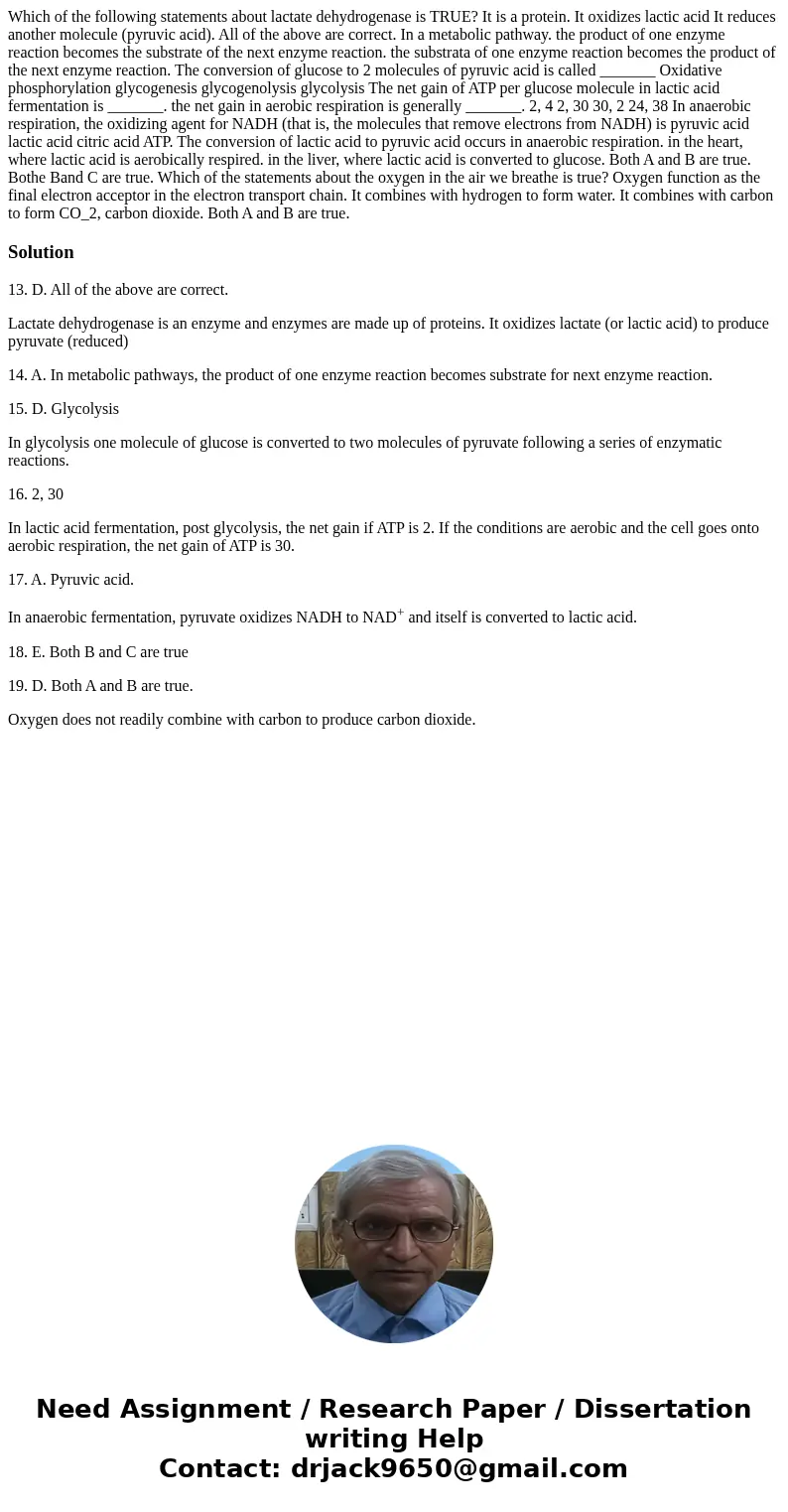Which of the following statements about lactate dehydrogenase is TRUE? It is a protein. It oxidizes lactic acid It reduces another molecule (pyruvic acid). All of the above are correct. In a metabolic pathway. the product of one enzyme reaction becomes the substrate of the next enzyme reaction. the substrata of one enzyme reaction becomes the product of the next enzyme reaction. The conversion of glucose to 2 molecules of pyruvic acid is called _______ Oxidative phosphorylation glycogenesis glycogenolysis glycolysis The net gain of ATP per glucose molecule in lactic acid fermentation is _______. the net gain in aerobic respiration is generally _______. 2, 4 2, 30 30, 2 24, 38 In anaerobic respiration, the oxidizing agent for NADH (that is, the molecules that remove electrons from NADH) is pyruvic acid lactic acid citric acid ATP. The conversion of lactic acid to pyruvic acid occurs in anaerobic respiration. in the heart, where lactic acid is aerobically respired. in the liver, where lactic acid is converted to glucose. Both A and B are true. Bothe Band C are true. Which of the statements about the oxygen in the air we breathe is true? Oxygen function as the final electron acceptor in the electron transport chain. It combines with hydrogen to form water. It combines with carbon to form CO_2, carbon dioxide. Both A and B are true.
13. D. All of the above are correct.
Lactate dehydrogenase is an enzyme and enzymes are made up of proteins. It oxidizes lactate (or lactic acid) to produce pyruvate (reduced)
14. A. In metabolic pathways, the product of one enzyme reaction becomes substrate for next enzyme reaction.
15. D. Glycolysis
In glycolysis one molecule of glucose is converted to two molecules of pyruvate following a series of enzymatic reactions.
16. 2, 30
In lactic acid fermentation, post glycolysis, the net gain if ATP is 2. If the conditions are aerobic and the cell goes onto aerobic respiration, the net gain of ATP is 30.
17. A. Pyruvic acid.
In anaerobic fermentation, pyruvate oxidizes NADH to NAD+ and itself is converted to lactic acid.
18. E. Both B and C are true
19. D. Both A and B are true.
Oxygen does not readily combine with carbon to produce carbon dioxide.

 Homework Sourse
Homework Sourse